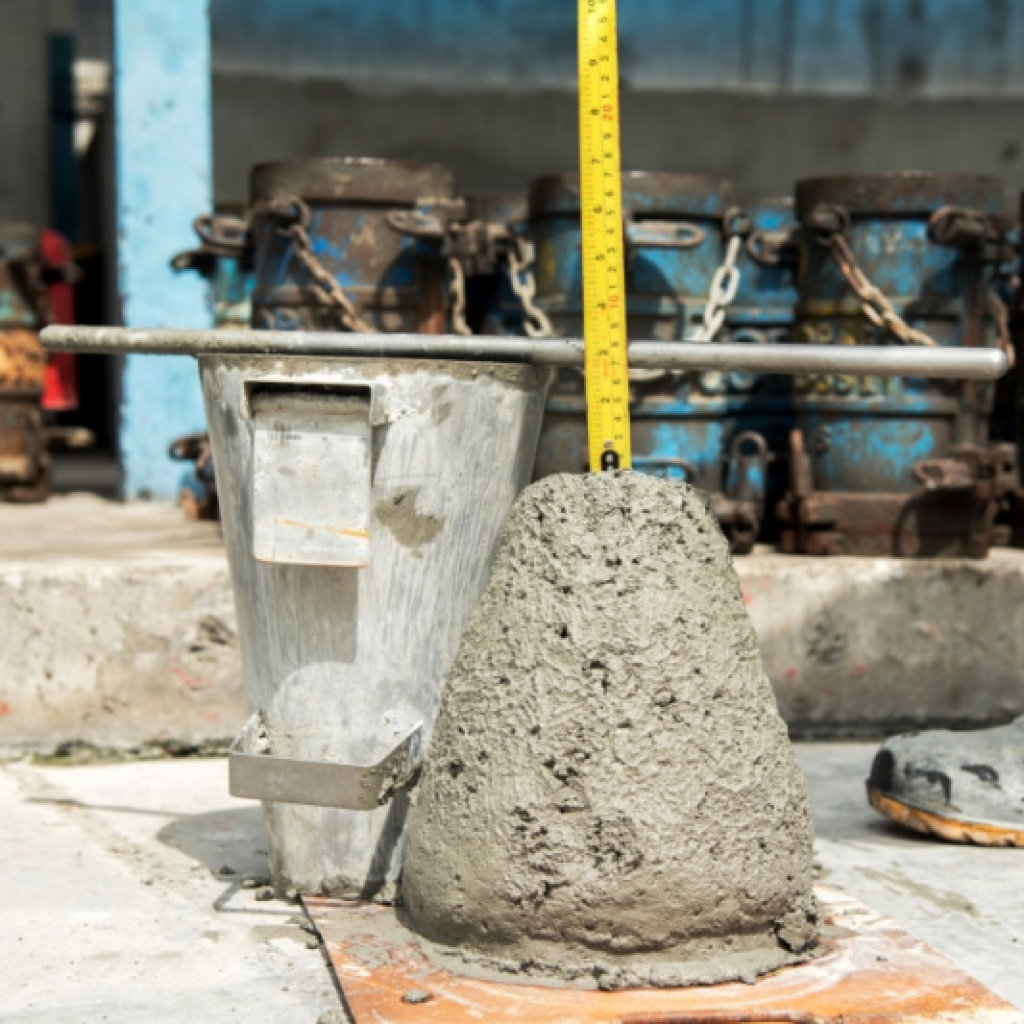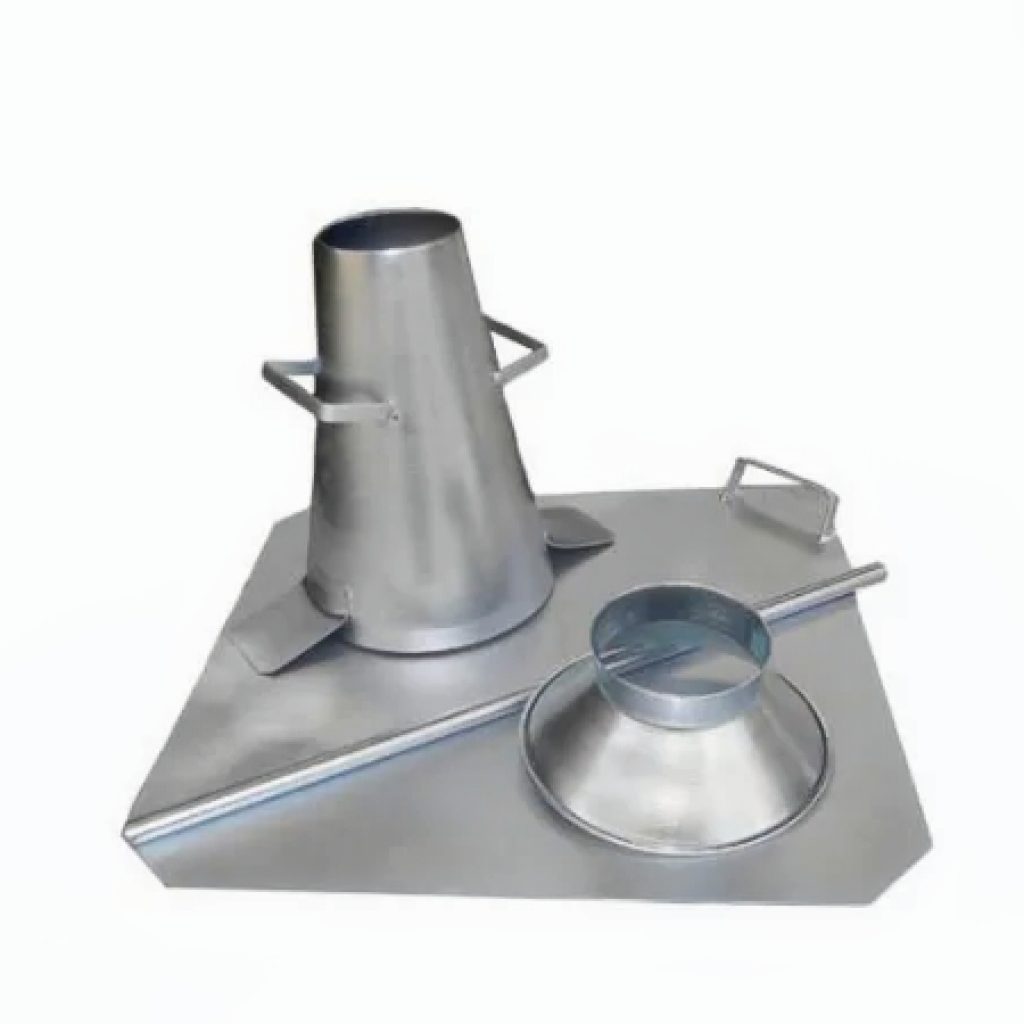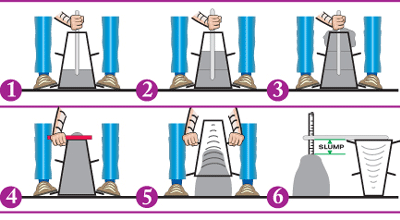Determine concrete mobility with cone
- What is meant by concrete mobility and why is it so important ?
- Factors affecting concrete mobility and what’s to avoid
- Importance of correctly calculating the volume of components
- What is Abrams cone?
- Parameters of the cone and principle of working with it
- All about concrete grades
- Why is it better with Сarmix?
What is meant by concrete mobility and why is it so important?
Checking the concrete mobility (plasticity) is important and simple at the same time. It does not require specific equipment, and is carried out with the help of a slumping cone.
Let’s understand what is meant by the concrete plasticity or mobility and why it is so important.
Concrete mobility is the filling of a specific form with concrete mixture.

Factors affecting concrete mobility and what’s to avoid
The concrete mixture must not only fill the designated volume easily, but also remain homogeneous and not separate into its components during the pouring process. All this has a great impact on the ease of working with concrete and on the work quality.
Concrete mobility is primarily influenced by the water-cement ratio in the finished product. Other parameters also affect: type of cement, amount and fraction of sand, size and shape of sand and gravel, the cement content as a percentage. It is possible to increase plasticity by use of plasticizers.
Importance of correctly calculating the volume of components
Typically, workers may try to increase mobility by diluting the concrete mixture with water. This is not a good solution because changing water-cement ratio in the direction of increasing water amount affects concrete strength and can lower concrete grade.
Calculation of concrete components volume is very important. Accurate compliance with mix design is required to ensure the strength and durability of concrete products.
Using a concrete mix with lower plasticity parameters will affect the quality of finished structure or product. Low concrete mobility in the finished object leads to formation of voids, this occurs due to insufficient compaction, which will also have a negative impact on stability factor.
What is Abrams cone?
Assessing a concrete mix plasticity with a cone is simple and takes both little time and a minimum of expense for measuring tools.

Equipment for this test includes a hollow truncated cone (so-called Abrams cone), a funnel, a bayonet and a measuring ruler.
Duff A. Abrams was an American researcher in the concrete composition field and properties. He developed the basic methods of determining concrete characteristics, including a cone to measure concrete mobility.
It is easy to buy an Abrams cone to measure concrete slump – it costs about $38. The kit includes everything you need to test.
Parameters of the cone and principle of working with it
Сone height is regulated, it is 30 cm. Upper and lower parts diameter of a cone is 10 cm and 20 cm (30 cm in the enlarged cone). Cone is filled with fresh concrete through the funnel, concrete is pierced with a bayonet to compact and remove voids, then the cone is lifted vertically and placed next to the resulting concrete slide . “Cone settlement” is the difference in height between the concrete and the cone in mm. To obtain accurate data, testing one batch is carried out at least 2 times, the difference in cone settlement when testing should not exceed 10 mm.

Concrete class depending on mobility is denoted by the letter P and a number. Depending on the cone slump, concrete mixtures are:
Slightly mobile
- P1: slump in the range of 50 mm
- P2: slump 50-100 mm
- P3: slump 100-150 mm
Movable
- P4: slump 150-200 mm
- P5: more than 200 mm slump
Concrete of different mobility has its own peculiarities, which must be taken into account.
P2 and P3 are slow-moving mixtures which must be placed using vibrating or compacting equipment. Otherwise, voids will remain in the concrete monolith, affecting the strength of the resulting product or structure.
Concrete grades P4 and P5 are very mobile. Such mobility is only possible by adding plasticizers to concrete mixture. Concrete mixtures should not be diluted with water to increase the plasticity, this is an abuse of formulation and will lead to a deterioration in concrete quality.
Keep in mind that concrete of classes P4 and P5 can be pumped with a concrete pump. The same concrete classes are used when pouring hard-to-reach objects.
Concrete of plasticity P2 to P3 is most often used in monolithic works.
All about concrete grades
Mobile batching plant that delivers concrete to the site is required to deliver concrete mix with all specified characteristics, including plasticity. Transportation process can take a long time, sometimes the mix is delivered with a higher flowability: P4, for example, when P3 is required. It is a good indicator if during the production process formulation will be observed, and additional mobility of the concrete mixture will be provided by plasticizers not by adding excessive amounts of water.
If the concrete mix is produced at the construction site, it is possible to
exactly observe the water-cement ratio and avoid unnecessary costs of plasticizers.
This is possible thanks to self loading concrete mixers use (mobile batching plant).
Why is it better with Сarmix?
There are many manufacturers of such equipment, but one of the most reliable is Carmix concrete mixer which is produced in Italy is concrete mixer CARMIX which was made in Italy.
The use of CARMIX will bring considerable benefits and help produce concrete mix with clearly defined characteristics without deviations from required mix design, which can guarantee concrete quality.
With help of Carmix concrete mix is produced directly on site and does not require long transportation, which can reduce the concrete plasticity.
CARMIX is equipped with a system of strain gauges that allow you to adjust volume of all aggregates loaded, including water. It is also equipped with a mechanical water meter for extra control of the recipe. Water-cement ratio is not compromised thanks to the weighing system and onboard computer with memory for dozens of concrete mix recipes. Using an accurate amount of water will help produce a concrete mix with required plasticity without compromising strength values.
If you need to include liquid additives and concrete admixtures, mobile concrete plant has tanks for liquid additives with an automatic system for feeding these additives in accordance with prescribed recipe.

